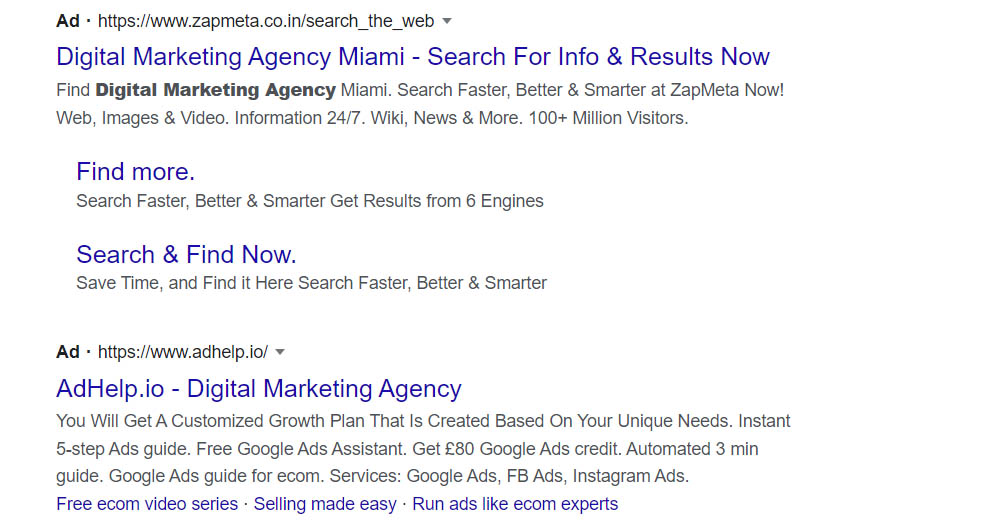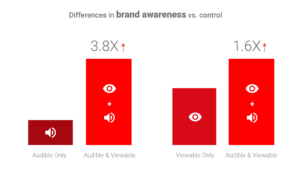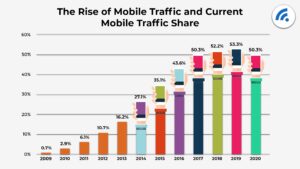
Expanded text ads are so 2021.
Search engines like to keep us on our toes by constantly changing their algorithm. If you want to guarantee the success of your campaign, you need to know what trends to leave behind.
Here are some of the latest PPC trends you need to know if you’re planning on placing ads in 2022.
1. Quality over quantity
Would you rather spend $50 for 1 conversion or $50 for 50 leads?
Most ad campaigns focus on generating a huge volume of leads. The quality of those leads takes a backseat as long as the numbers are there. But there’s little use in awareness if none of those leads are going to become customers.
Yes, it costs more to generate high-quality leads. But once they become revenue-generating customers, the cost-to-acquire becomes less.
Creating targeted ads is one way to catch your potential customer’s attention. You can do this by integrating your CRM tool with Google Ads. This will optimize your keywords and campaigns. You can also utilize Google Adwords experts to help get your campaign started.
2. PPC automation
When everything’s automatic, why can’t Google Ads also be?
With so much data out there, it is hard for advertisers to read them all to understand customer behavior. PPC automation brings in the power of AI and Machine Learning to do the brunt of the work for you.
By automating the process, advertisers will be able to get the most out of their ads. The automation system can halt the lowest performing ads and boost only the result-generating ones.
PPC automation will also help generate in-depth analytics of your ad’s performance. An extensive manual report takes hours to generate. With an automated tool, the whole step is eliminated.
3. Video-based ads
Advertisers reported an almost 4 times increase in brand awareness when they posted a video ad. This is because the message retention is greater in this medium than in any other.

Since the Google advertising market is saturated, even non-competitive keywords are expensive. But since the competition is lesser, Video AdWords are cheaper. So for less ad spend, you will get more conversions.
87% of advertisers who used video ads reported a positive ROI. The advantage of video ads is that the shorter it is, the better. So with lesser production efforts, you can boost brand awareness.
4. Third-party Cookie-less advertising
So many people complain about seeing ads for topics they’ve only thought about. Though that’s speculation, Google’s third-party cookies are pretty adept at capturing data for advertisers.
Third-party cookies are, however, being phased out. Due to emerging data privacy issues, governments all over the world are placing regulations on how these advertising cookies operate.
This is a cause for celebration for users. But advertisers must quickly learn how to market ads with only first-party cookies.
Because of this, it may be harder to target your ads. You would need to conduct in-depth research to get to the same level of ad personalization. This would be another reason for the emergence of PPC automation.
5. User-based ads
Many content creators make content for the search engine. Their first priority is the algorithm liking the content. The value of the content is often lost.
In 2022, the algorithm is changing to become more consumer-friendly. This will force advertisers to create content that doesn’t satisfy only the algorithm. In the long run, this will alter your whole content-planning strategy.
Instead of keyword stuffing, the focus will shift to value-based ranking. So when making ads, you need to think “what will my users want to see” and not “what should I show my users”.
6. Responsive ads
Most internet users access the web through their mobile phones.

But desktop users still constitute a fair share of internet users.
Having Responsive Search Ads (RSAs) is an easy way to manage advertising copies between devices. You don’t need to design separate display ads based on the device’s size. This means you won’t need a dedicated designer on your team.
In a PPC campaign, a responsive ad will broaden the reach of your campaign. Since you won’t need to target based on device, you can reduce your ad spend.
A responsive design is also more likely to catch the eye of your audience. So, by using RSAs, you can increase your ROI with less effort.
7. Platform diversification
Google was almost dethroned by Amazon and Facebook for the best PPC market platforms in 2021. But, these three aren’t the only platforms where you should be posting your PPC campaigns.
Because the top three websites are saturated with ads, users are turning to other sites for browsing. These sites are where you should start placing your ads. Here are some of the top platforms to diversify into.
LinkedIn: LinkedIn is the best advertising platform for B2B businesses. It is easy to target your exact customers on LinkedIn, which will increase your ROI. The platform has 66.8 million monthly active users.
Bing: Bing is the second largest search engine with 1,038 billion unique visits monthly. Though Google controls the market, 1,000 billion is still a hefty number that you can tap into.
Pinterest: For a B2C company, then Pinterest is one of the best platforms to advertise on. The platform has over 440 million active users.
8. Channel diversification
You can’t put all your eggs in one basket. Relying on only a PPC campaign for your entire marketing efforts is illogical.
PPC campaigns work best in tandem with other channels of advertising. Brands need to focus on other marketing channels like affiliate marketing, SEO, and organic search results.
Email marketing, though outdated, is another channel all brands should focus on. Email marketing is the best way to build and maintain relationships with your customers.
9. Voice-search optimization
After the start of the pandemic, shopping has become predominantly online-based. And even online shopping has become increasingly voice-based. According to Capgemini, 70% of all consumers will use voice to shop in 2022.
All businesses should optimize their search results for voice search if they want to keep with the trends. Here are some methods to do that.
1. Focus on Long-tail keywords
Most voice searches begin with “Hey Siri” followed by a long question phrase. If you want your website to be the result Siri pulls up, you need to predict what the question phrase will be. Then, attach those question phrases to your website in product descriptions or FAQ pages.
2. Create pages that answer questions
Your website needs pages that will help your customers’ search queries. FAQ pages are the easiest way to do this. But if you include answers in headlines, your page is more likely to show up in results. So you will need to restructure your pages for voice queries.
Most of these 9 trends work best in collaboration with one another. Understand your customers first before you begin any ad campaign. Then, if you employ the techniques, you will see an increase in your conversion rates.
